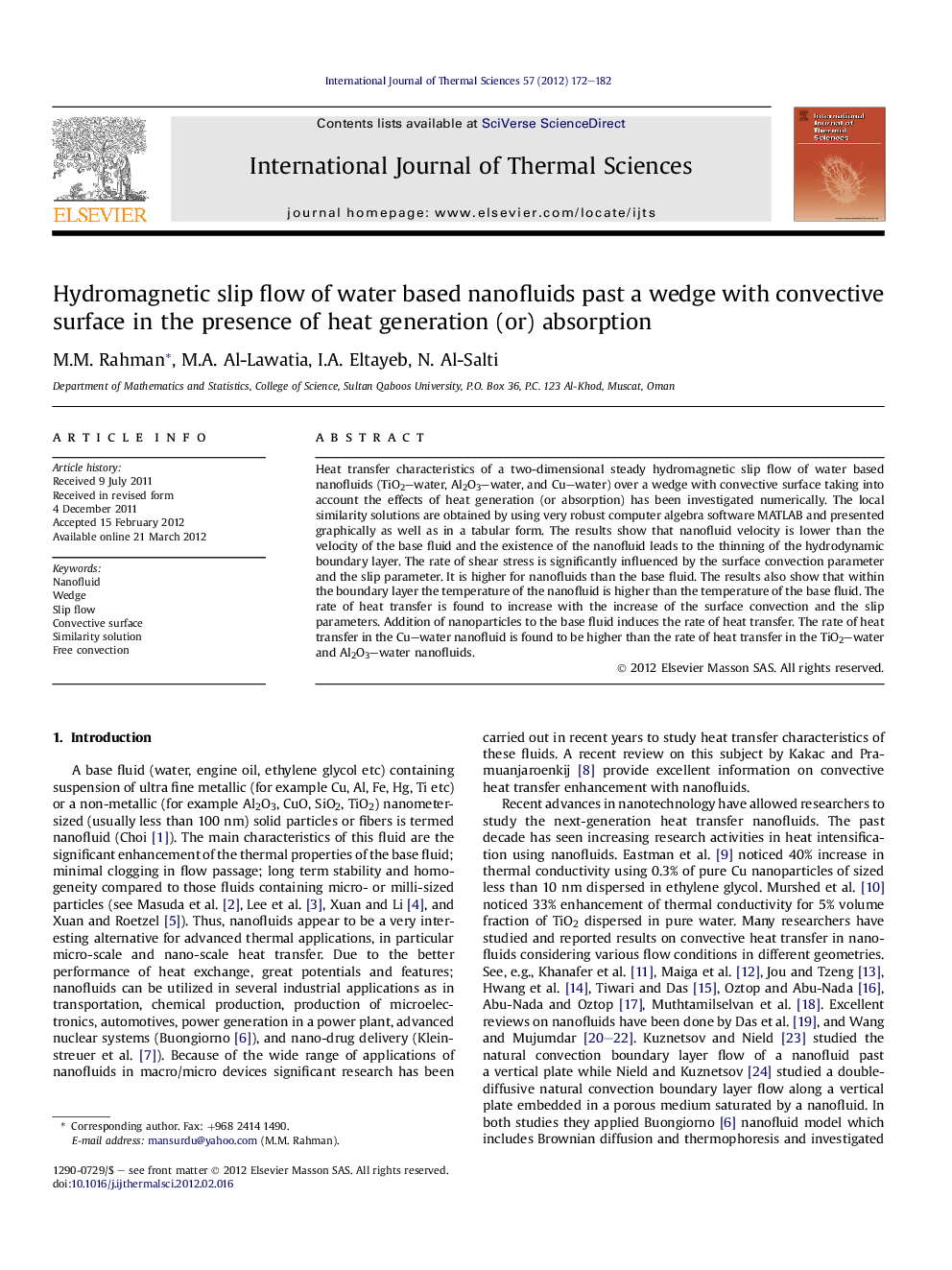| کد مقاله | کد نشریه | سال انتشار | مقاله انگلیسی | نسخه تمام متن |
|---|---|---|---|---|
| 668693 | 1458765 | 2012 | 11 صفحه PDF | دانلود رایگان |

Heat transfer characteristics of a two-dimensional steady hydromagnetic slip flow of water based nanofluids (TiO2–water, Al2O3–water, and Cu–water) over a wedge with convective surface taking into account the effects of heat generation (or absorption) has been investigated numerically. The local similarity solutions are obtained by using very robust computer algebra software MATLAB and presented graphically as well as in a tabular form. The results show that nanofluid velocity is lower than the velocity of the base fluid and the existence of the nanofluid leads to the thinning of the hydrodynamic boundary layer. The rate of shear stress is significantly influenced by the surface convection parameter and the slip parameter. It is higher for nanofluids than the base fluid. The results also show that within the boundary layer the temperature of the nanofluid is higher than the temperature of the base fluid. The rate of heat transfer is found to increase with the increase of the surface convection and the slip parameters. Addition of nanoparticles to the base fluid induces the rate of heat transfer. The rate of heat transfer in the Cu–water nanofluid is found to be higher than the rate of heat transfer in the TiO2–water and Al2O3–water nanofluids.
► Slip mechanism, heat generation, magnetic field, wedge angle, and surface convection significantly control the nanofluid velocity.
► The presence of the nanoparticles leads to the thinning of the hydrodynamic boundary layer thickness.
► Heat transfer in nanofluid strongly depends on slip, surface convection and the nanoparticle volume fraction parameters.
► The shear stress and the rate of heat transfer significantly influenced by the surface convection and the slip parameters.
► The rate of heat transfer in a Cu–water nanofluid is found higher than that of the TiO2–water and Al2O3–water nanofluids.
Journal: International Journal of Thermal Sciences - Volume 57, July 2012, Pages 172–182